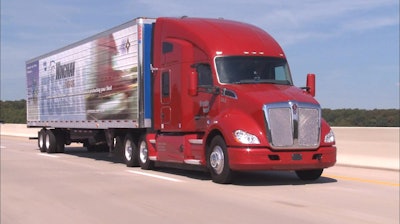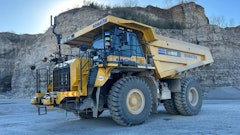
Preliminary North American Class 8 orders for February fell from January, to a total of 14,100 units. This is the lowest order activity for the month of February since 2010 and down 18% year-over-year, says FTR. Fleets were already being very cautious in equipment purchases due to the flat freight market and slowing economy; now the COVID-19 virus has added to that uncertainty. Orders had been right at replacement levels for 4 months but now it appears fleets will take a pause in replacing older trucks until current anxiety dissipates. Class 8 orders have totaled 177,000 over the past 12 months.
Don Ake, Vice President Commercial Vehicles, comments, “This is not good news for the trucking industry or the economy. It appears fleets have decided to delay some orders until the health crisis has passed. There is no pressure for fleets to order more trucks since most carriers have enough capacity to handle current freight volumes.
“The market was already in a wait-and-see mode before the virus spread. Now, fleets are just waiting for things to calm down before returning to normal ordering patterns. The industry was already taking a pause after 2 years of great sales. The current uncertainty has just made more fleets leery of taking on additional risks.”
ACT Research says February’s Classes 5-7 net orders rose to an 11-month high 22,200 units, up 12% from January, but down 12% from a very strong year-ago comparison.
“Weak freight market and rate conditions, as well as a still-large backlog, continue to bedevil new Class 8 orders,” says Kenny Vieth, ACT’s President and Senior Analyst. He continues, “February is not a particularly strong Class 8 order month and this February’s results, seasonally adjusted, were the weakest monthly order rate since last August.”
Vieth also mentions, “With COVID-19 becoming a hot topic at the end of February, one wonders if that impacted order activity.”
Regarding medium-duty activity in February, he notes, “COVID-19 did not seem to bother medium-duty vehicle buyers as much, as that segment reported a third consecutive month of solid orders. Starting in February, the calendar rolls into the peak order season for medium-duty vehicles.”
Capacity to pose challenge for heavy vehicle market
ACT Research’s recently released Transportation Digest says key truck transportation metrics continued to give mixed signals in early 2020. Additionally, the report explained that the total medium-duty market closed 2019 on a positive note, with all indicators improving sequentially in December, while the U.S. trailer segment closed 2019 on weak net orders, well below seasonal expectations.
“The core challenge in the heavy truck market in 2020 is that significant capacity was added in 2019 relative to freight growth. That imbalance is reflected in today’s weak rate environment,” says Vieth.
He adds, “As the economy and freight slowed in 2019, the capacity excess put asset holders on the defensive and gave shippers a big edge in 2020’s rate negotiations.”
Regarding the heavy truck market in 2020, Vieth comments, “It is going to be a capacity rationalization year, that hopefully will go a long way in restoring the supply-demand balance between trucks and freight.”
Regarding the medium-duty and trailer segments, he explainsd, “In 2019, the medium duty sector saw moderate gains in production and sales, but weakening demand in late 2019 set a course for an overall decline in 2020. Anecdotal information from the trailer market points to price concessions occurring to incentivize order placements, in hope that those incentives will help to soften anticipated large declines.”



















